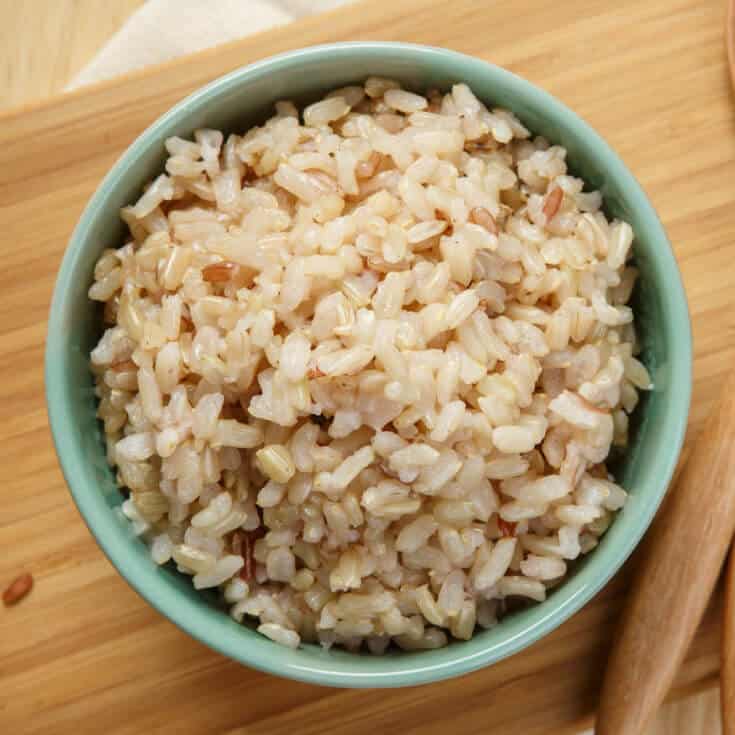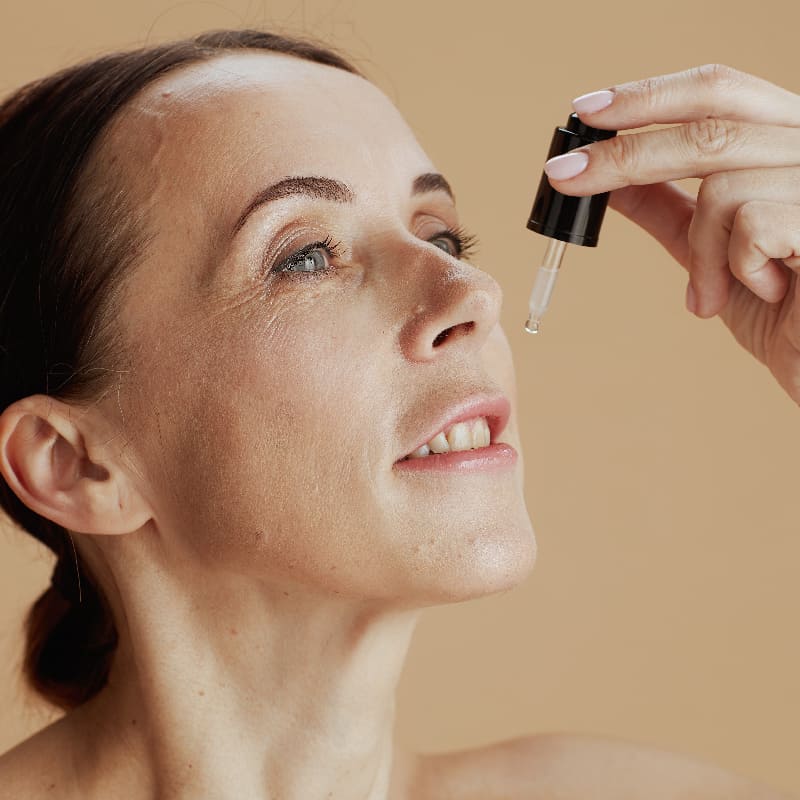This Dr. Axe content is medically reviewed or fact checked to ensure factually accurate information.
With strict editorial sourcing guidelines, we only link to academic research institutions, reputable media sites and, when research is available, medically peer-reviewed studies. Note that the numbers in parentheses (1, 2, etc.) are clickable links to these studies.
The information in our articles is NOT intended to replace a one-on-one relationship with a qualified health care professional and is not intended as medical advice.
This article is based on scientific evidence, written by experts and fact checked by our trained editorial staff. Note that the numbers in parentheses (1, 2, etc.) are clickable links to medically peer-reviewed studies.
Our team includes licensed nutritionists and dietitians, certified health education specialists, as well as certified strength and conditioning specialists, personal trainers and corrective exercise specialists. Our team aims to be not only thorough with its research, but also objective and unbiased.
The information in our articles is NOT intended to replace a one-on-one relationship with a qualified health care professional and is not intended as medical advice.
Don’t Just Smell the Roses! Rose Hips for Arthritis Relief + 4 Other Benefits
May 13, 2018

What are rose hips? They are the accessory, or false fruit, of a rose plant and guess what: They are edible! And they’re actually more than just something you can eat — they’re something that can provide a major boost of valuable nutrients.
The reason why you often see vitamin C with rose hips supplements is due to the fact that rose hips are naturally very high in vitamin C while also providing many other beneficial active plant compounds like phenols, flavonoids, ellagic acid and lycopene, along with other key nutrients like vitamin E and even fatty acids.(1)
Rose hips have been used traditionally as medicinal compounds for the treatment of a wide variety of diseases. So how can they possibly boost your health? For starters, research is pointing towards the ability of rose hips to provide anti-inflammatory benefits, which are particularly helpful when it comes to arthritis relief. (2) And this is just one of the many health benefits you’ll learn more about if you keep reading!
Rose Hips Origin & Nutrition Facts
Roses are mainly native to temperate regions of the Northern Hemisphere. Rose hips, also called rose haws or rose heps, are an edible part of a rose bush. They vary in size, shape and color, but they are often a shade of orange or bright red.
Where are rose hips found? They are found in the same place you would find flowers and appear when the flower dies, but not all rose plants produce rose hips and not all blooms turn into the fruit either. When they do appear, they look somewhat similar to a spherical berry with an additional few feathery wisps coming out of the bottom.
What kind of roses have rose hips? Many rose species produce edible rose hips, but rugosa roses (Rosa rugosa) are especially known for their rose hips. (3)
Are all rose hips edible? Both rose hips and rose petals are edible.
Are there any poisonous rose hips? Some species of the Rosaceae (rose) family are known to contain cyanogenic glycosides, which have the ability to produce highly toxic hydrogen cyanide when degraded by plant enzymes. (4) So rose hip seeds can contain a cyanide precursor, but as with other fruits, you can easily remove the seeds. Before you become alarmed, apple seeds, along with apricot, peach and cherry seeds, are also known to contain cyanide. All of these fruits actually belong to the rose family. Now, if you accidentally swallow a few seeds, it’s not lethal, but these seeds are not something you would want to consume in large quantities. (5)
One ounce of wild rose hips contains about: (6)
- 45 calories
- < 1 gram protein
- 10.7 grams carbohydrates
- 6.7 grams fiber
- <1 gram sugar
- 0 grams fat
- 119 milligrams vitamin C (199 percent DV)
- 1217 international units vitamin A (24 percent DV)
- 0.3 milligrams manganese (14 percent DV)
- 7.3 micrograms vitamin K (9 percent DV)
- 1.6 milligrams vitamin E (8 percent DV)
- 47.3 milligrams calcium (5 percent DV)
- 19.3 milligrams magnesium (5 percent DV)
- 120 milligrams potassium (3 percent DV)

5 Benefits of Rose Hips
Scientific research demonstrates that there are a lot of impressive rose hips benefits including:
1. Immune Booster
The vitamin C content in rose hips is very impressive, making it a great choice if you want to boost your immune system. I always increase my vitamin C intake when I feel run down, especially during cold and flu season. As a 2014 scientific review points out, vitamin C — also referred to as ascorbic acid — is “essential to stimulate the immune system by increasing the strength and protection of the organism” and it is “important in all stressful conditions that are linked to inflammatory processes and involve immunity.” (7)
2. Obesity Reducer
Can rose hips help to treat obesity naturally? According to some research, perhaps! A randomized, double-blind, placebo-controlled clinical trial published in 2015 examined the effects of rose hip supplementation on subjects for 12 weeks. During this time, the pre-obese subjects were assigned to two random groups and either received one tablet of placebo or 100 milligrams of rosehip extract once each day with zero dietary intervention.
The researchers found that daily intake of rose hip extract significantly reduced all of the following in the pre-obese subjects: abdominal total fat area; abdominal visceral fat area; body weight; and body mass index. These decreases were also substantially higher compared to the placebo group. (8)
3. Arthritis Helper
Rose hips from Rosa canina (also known as dog rose) have been shown to alleviate arthritis symptoms when taken on a daily basis. Rose hip has been shown to block the activation of proteins in cartilage cells that can lead to unhealthy degradation of joint tissue. This herbal remedy has also been shown to have anti-inflammatory and immunosuppressive effects by decreasing chemotaxis, which is the transportation of immune cells into tissue. (9)
There have been numerous studies over the years revealing the possibility that rose hips can help people suffering from arthritis. A randomized, placebo-controlled, double-blind crossover clinical trial published in the Scandinavian Journal of Rheumatology looked at the effects of rose hips on 94 patients with osteoarthritis of the hip or knee. Half of the patients were given five grams of an herbal remedy made from a subspecies of rose hips (Rosa canina) daily for three months and the other half were given a similar amount of placebo. After three weeks, the rose hip group experienced a “significant reduction” in pain compared to the placebo group. (10)
Other studies have also shown similar results of arthritis symptom reduction including less pain and stiffness with rose hip supplementation. (11, 12)
4. Anti-Ager
A randomized, double-blind clinical study published in 2015 in the journal Clinical Interventions in Aging compared the ability of rose hip powder versus astaxanthin to improve signs of aging, including wrinkles. The rose hip powder contained both seeds and shells of rose hip fruit from the Rose canina plant. Subjects were between the ages of 35 and 65 and had wrinkles on their faces. For eight weeks, half of the subjects consumed standardized rose hip product while the other half took astaxanthin.
What did they find? Subjects in both the rose hip and astaxanthin supplementation groups had positive self-assessments of change. The rose hip group showed statistically significant improvements in crow’s feet wrinkles, skin moisture and elasticity (with similar results in the astaxanthin group). (13)
5. Anti-Cancer
Could rose hips be another natural way to fight some types of cancer? It looks possible, according to some research to date. A type of breast cancer known as triple negative prevalent amongst young women as well as those who are African-American or Hispanic is a very aggressive form of cancer which does not respond to most available treatments.
During an in vitro study (lab study) published in 2015 in the Cancer Research journal scientists treated tissues cultures of African American triple negative (HCC70, HCC1806) and luminal (HCC1500) breast cancer cell lines with several concentrations of rosehip extract. The findings were very positive: “Each of the breast cancer cell lines were treated with rosehip extracts (1mg/mL to 25ng/mL) demonstrated a significant decrease in cell proliferation.” Pretreatment of the cancer cell lines with rosehip extract also selectively reduced MAPK and AKT, two enzymes that are known to promote cell growth in triple negative breast cancer. (14)
History & Interesting Facts
Rose hips are the fruit of a rose plant and they appear after the flower dies. For hundreds of years, they were a key dietary element for native people of North America where roses were found growing wild.
When the importing of citrus fruits was limited during World War II, rose hips became very popular in Great Britain. During this time in history, volunteers there would gather rose hips for hours for the creation of rose hip syrup for the Ministry of Health. This syrup would be given out to citizens for health purposes with children being at the top of the priority list. (15)
In addition to syrup, they are also used in jams, jellies, herbal teas, soup, beverages including wine, pies and bread. (16)
How to Use Rose Hips
A standard dose of rose hips is five to 10 grams per day broken up into two doses. It is best taken with meals. Doses as high as 40 grams have been studied. Intestinal distress is the most common side effect of high doses. (17)
There is also a powdered version, which is a popular form of the rose hip supplement. What is rose hips powder? It’s simply dried and crushed rose hips. Research has demonstrated that freeze-drying and drying seems to preserve the antioxidant activity of rose hips at a high level. (18) There’s also rose hip capsules and tablets or vitamin C supplements that include rose hips.
There’s also rose hip tea, which can be made from fresh or dried rose hips, which is a great easy way to give rose hips a try.
Wondering about harvesting rose hips and how to eat rose hips? They should be picked once they turn a vibrant orange or red color. Most experts agree it’s best to pick them following the occurrence of the first frost of fall because this tends to increase the sweetness of the fruit.
For use in rose hips recipes, the hips typically are cut in half with a sharp knife, the tiny hairs and seeds are removed, and then they are washed in cold water.
For topical use, there is also rose hip seed oil and there are many awesome rose hip oil benefits.
Possible Side Effects and Interactions
Side effects of rose hips may include nausea, stomach cramps, diarrhea, vomiting, constipation, heartburn, headache, fatigue and sleep troubles. When taken in appropriate doses by mouth, rose hip typically does not have any unwanted side effects.
If you are being treated for any medical conditions or are currently taking medication, definitely speak with your doctor before taking rose hips.
Rose hips are typically not recommended for the following people: pregnant and breastfeeding women; diabetics; anyone with a bleeding condition or sickle cell disease; iron-related disorders such as hemochromatosis, thalassemia, or anemia; and anyone who has a tendency to experience kidney stones.
If you have a glucose-6-phosphate dehydrogenase deficiency (G6PD deficiency), due to their high vitamin C content large doses of rose hips may raise the risk of complications. In addition, individuals who have experienced a heart attack, stroke or blood clots in the past may increase their risk for blood clots if they take rose hips. This is because the hips contain rugosin E, which is believed to possibly cause blood clots.
Possible “minor” interactions with rose hip include aspirin, choline magnesium trisalicylate and salsalate. “Moderate” interactions may include blood thinners like warfarin, aluminum (found in most antacids), lithium, fluphenazine, and estrogens. (19)
Rose Hips Key Points
- A rose hip is the edible fruit of a rose plant and they appear on rose plants after the flowers bloom.
- They are impressively rich in important nutrients like vitamin C, beta carotene, manganese, vitamin K and vitamin E.
- They’re also rich in beneficial phytochemicals like flavonoids and phenols.
- Rose hips are best picked after the first frost of fall and can be used to make tea and other rose hip recipes.
5 Possible Rose Hip Benefits
- Boosting the immune system
- Reducing body fat and body weight in pre-obese people
- Improving arthritis symptoms
- Decreasing signs of aging like crow’s feet
- Possibly acting as a natural anti-cancer substance, particularly in triple negative breast cancer











